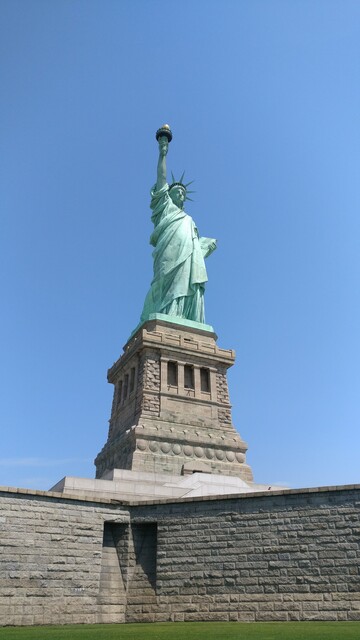What are the properties of solids?

Statues are solid objects with properties such as rigidity, density, and immobility.

Statues are solid objects with properties such as rigidity, density, and immobility.
Solids are special materials that we can touch with our hands, and they don't change their shapes easily. There are different properties of solids that we can observe, and we use these properties to understand what kind of solid we are dealing with.
One of the properties of solids is that they have a definite shape. It means that when we touch a solid, it feels like it is not going to change its shape. For example, when we play with a toy car, we can feel that it is hard and does not bend or change its size easily.
Another property of solids is that they have a definite volume. It means that the amount of space that a solid takes up is fixed. For instance, if we fill a glass with water and then put ice cubes in it, the amount of water and ice add up to a fixed amount of space.
Solids cannot be easily compressed. When we try to compress a solid, it feels like we are pushing against a wall because the solid does not bend or change its shape easily.
Solids also have a definite mass. It means that they have a weight that we can measure. For instance, when we hold a book, we can feel its weight, and if we use a scale, we can measure its mass.
In summary, solids are materials that we can touch and feel. They have definite shapes, volumes, mass, and cannot be easily compressed. These properties are essential to help us understand the different types of solids and use them appropriately in our daily lives.
Can a liquid change into a solid?
Yes, a liquid can change into a solid. This process is called freezing. When we put water into the freezer, it becomes colder and colder. Eventually, it turns into ice, which is a solid. So, liquids like water can change their state and become a solid when they get really cold.
What are chemical properties?
Chemical properties describe how a substance reacts with other substances. They tell us what happens when different substances interact or mix together. For example, if we mix vinegar and baking soda, they react and create a fizzy and foamy reaction. This is a chemical property of these substances.
What are physical properties?
Physical properties are characteristics of substances that you can observe or measure without changing the substance into something else. Some examples of physical properties include color, size, shape, and texture. For instance, when you look at an apple, you can see that it is red (color) and round (shape).
What are some examples of chemical properties?
Some examples of chemical properties include reactivity, flammability, and toxicity. Reactivity shows how a substance reacts with other substances. For instance, if we mix an acid with a metal, it can produce dangerous gases. Flammability tells us if a substance can catch fire easily. Gasoline is highly flammable, so we need to be careful when handling it. Toxicity refers to the ability of a substance to harm living things. Some cleaning products contain toxic chemicals that we should avoid ingesting or inhaling.
What are some examples of everyday objects that change state?
There are many everyday objects that can change state depending on the temperature. For example, water can change from a liquid to a solid when it freezes. When we put water in the freezer, it becomes ice. Similarly, when we heat water on the stove, it changes from a liquid to a gas and becomes steam. Another example is when we melt chocolate. It changes from a solid to a liquid when we heat it.
What are some examples of solids?
Some examples of solids are a toy car, a book, a rock, and a pencil. These objects are made of materials that do not change their shape easily and we can touch and hold them.
What are the properties of gases?
Gases are materials that can change their shape and size easily. They don't have a definite shape or volume because their particles are spread out and move around freely. Examples of gases are the air we breathe, helium in balloons, and steam from a boiling kettle.
What are the properties of liquids?
Liquids are materials that can change their shape easily, but they have a definite volume. They flow and take the shape of the container they are in. Some examples of liquids are water, milk, and juice.
What happens to the particles of a solid when it is heated?
When a solid is heated, its particles start to move faster and gain energy. They vibrate and start to move further apart. This causes the solid to expand and can make it change state into a liquid or a gas, depending on how much heat is supplied.
What is the difference between a solid and a liquid?
The main difference between a solid and a liquid is how their particles behave. In a solid, the particles are packed tightly together and cannot move freely. They vibrate in place. In a liquid, the particles are still close together, but they can move and flow past each other. That's why liquids can change shape to fit the container they are in, while solids have a fixed shape. For example, think of an ice cube (solid) and a glass of water (liquid). The ice cube keeps its shape, but the water can take the shape of the glass.

Statues are solid objects with properties such as rigidity, density, and immobility.